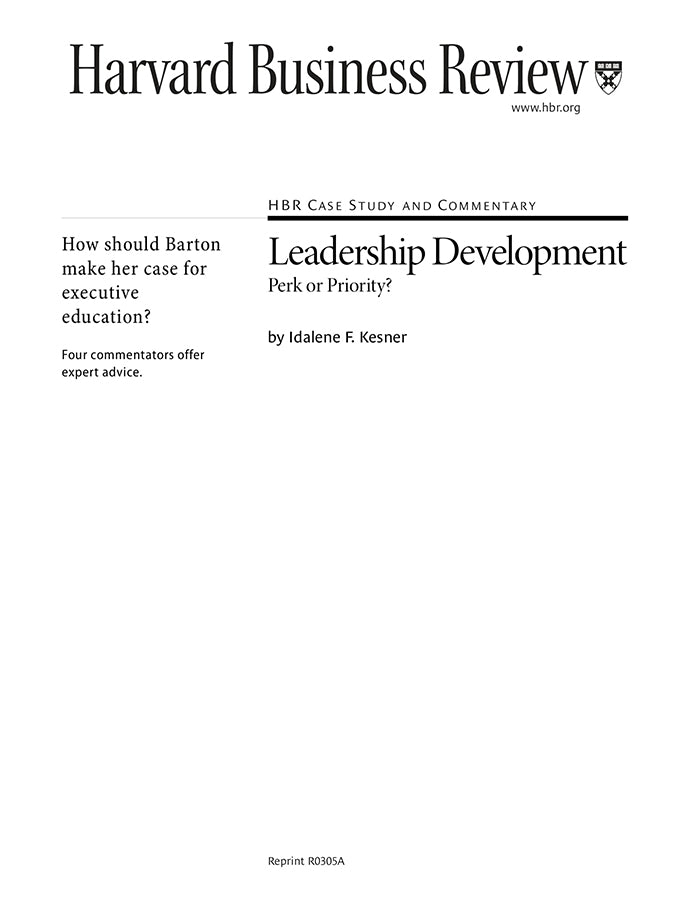Leadership Development: Perk or Priority? (HBR Case Study and Commentary)
受取状況を読み込めませんでした
THIS CASE STUDY INCLUDES BOTH THE CASE AND THE COMMENTARY. FOR TEACHING PURPOSES, THE REPRINT IS ALSO AVAILABLE IN TWO OTHER VERSIONS: CASE STUDY-ONLY, REPRINT R0305X, AND COMMENTARY-ONLY, REPRINT R0305Z. Karen Barton, Zendal Pharmaceuticals' senior vice-president of human resources, was livid when COO Dave Palmer slashed her executive education budget by 75%. Without funding, there could be no in-house leadership development program, which was to be the first step toward a full-blown Zendal University. Palmer was not against bold initiatives, but sales were down 26%, and there was that $300 million debt Zendal took on when it acquired Premier Pharmaceuticals. As a result, Barton's budget wasn't the only one being cut. Palmer added that it wasn't clear what the return on investment of her proposed program--or any of her current ones for that matter--would be. Barton's analysis had been woefully short on quantitative benefits. Figuring ROI for people isn't the same as calculating the payback from a machine, Barton complained to friend and ally Carlos Freitas, head of the medical devices division. But Freitas disagreed: "If you want dollars, you have to show how you fit in with [management's] plans. You must be willing to fight for resources with the rest of us." She knew Freitas was right. She needed to make the case that doubling her budget was a smart move even in tough times. The question was, How? In R0305A and R0305Z, four commentators--Susan Burnett, an HR executive at Hewlett-Packard; Mike Morrison, dean of the University of Toyota; Noel M. Tichy, professor at the University of Michigan Business School; and David Owens, vice-president of Bausch & Lomb's corporate university--offer advice in this fictional case study.
【書誌情報】
ページ数:12ページ
サイズ:A4
商品番号:HBSP-R0305A
発行日:2003/5/1
登録日:2012/3/28


